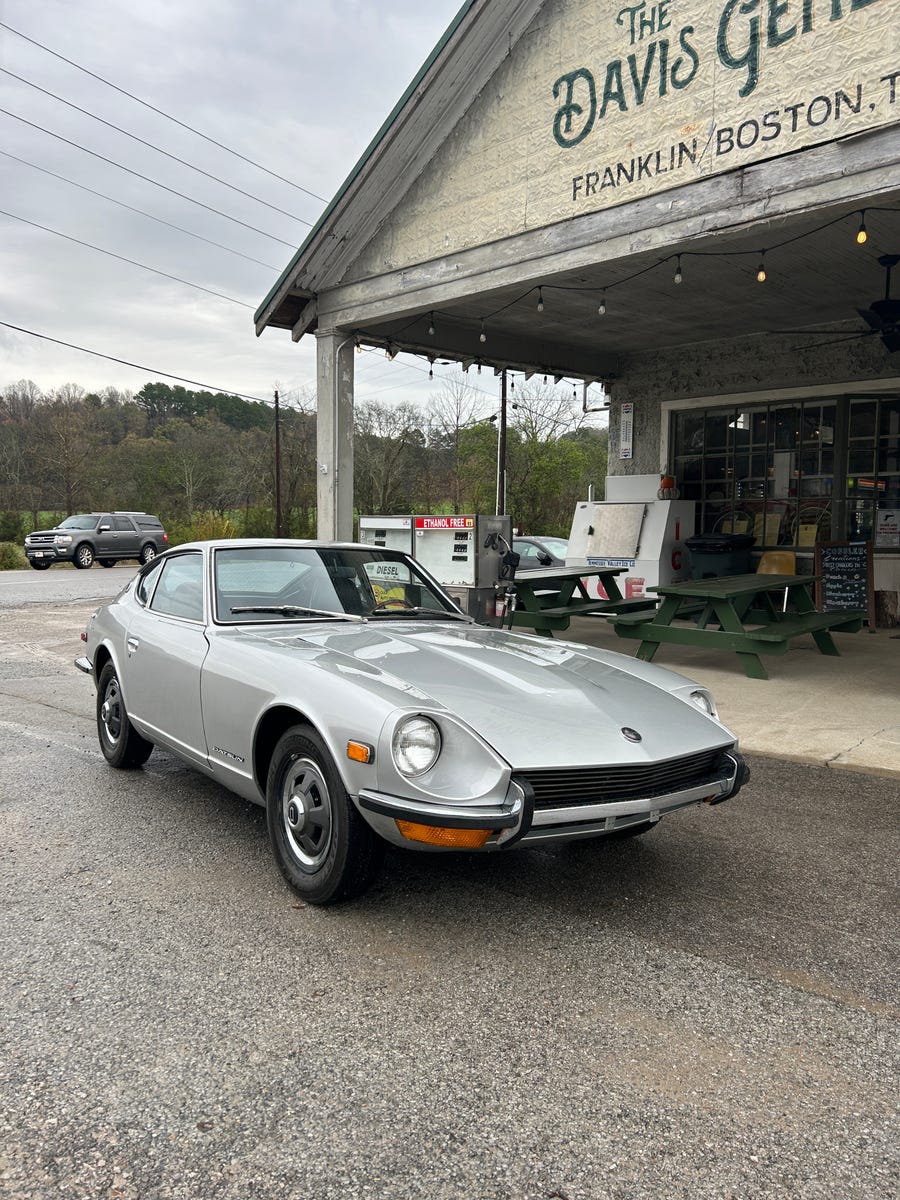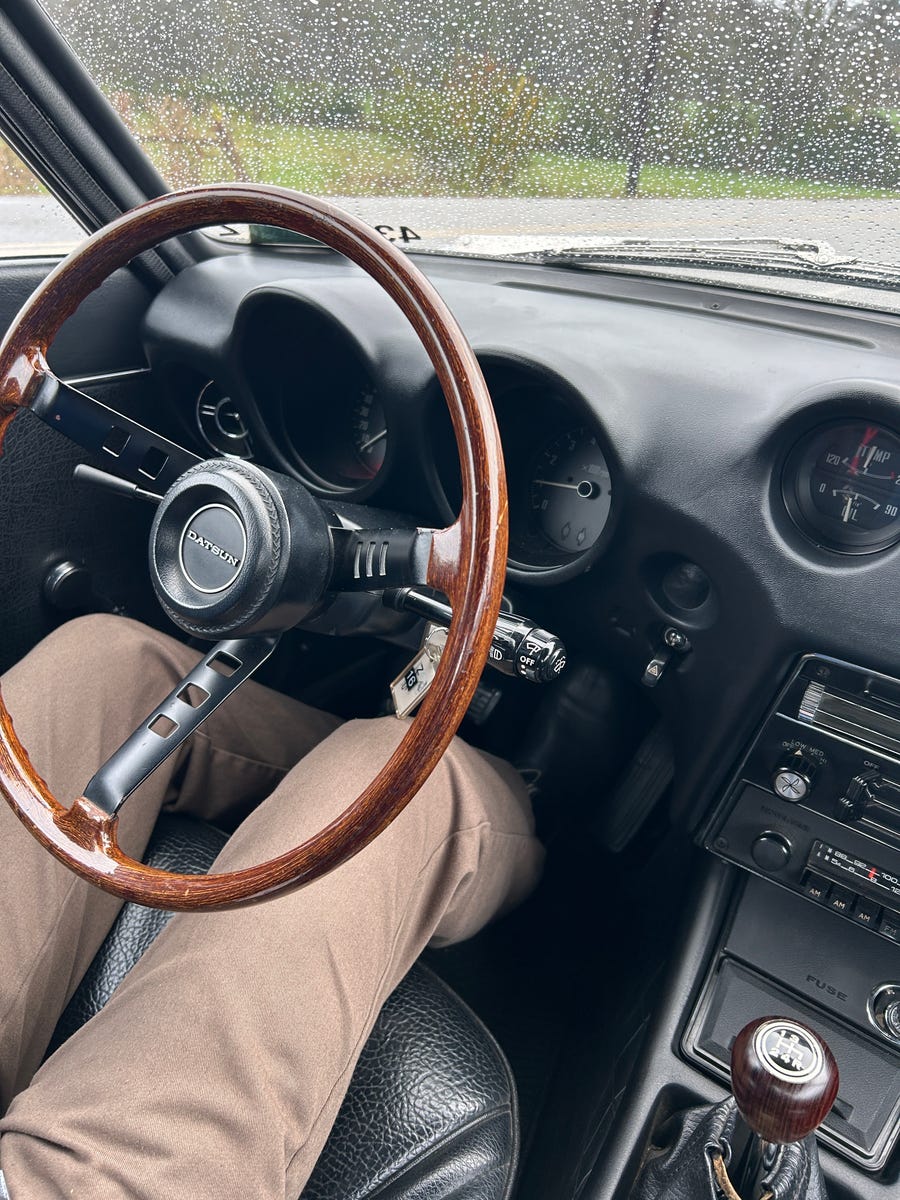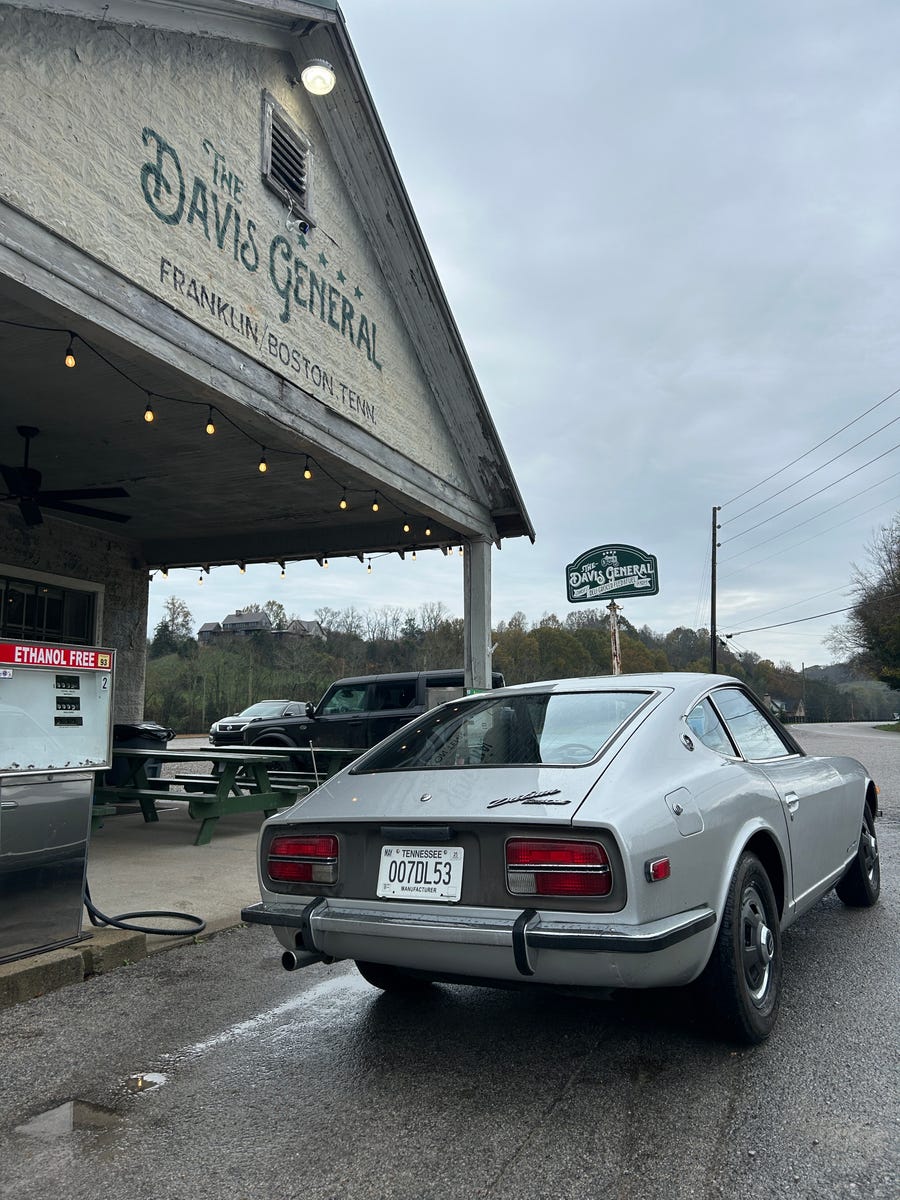- Dapatkan link
- X
- Aplikasi Lainnya
The procedure can seem all-encompassing in our daily lives. The obstacles standing between you and your satisfaction have become increasingly bothersome in today’s society. After all, shouldn’t everything be readily available to us? However, with classic cars, the process itself often becomes a significant draw.
Starting this immaculate 1973 Datsun 240Z from Nissan’s Heritage collection in Nashville, Tennessee, involved a ritual enthusiasts grew fond of. As I slid into the lowered, black leather bucket seat, I followed instructions to gently engage the throttle lever located on the central console approximately halfway, using just two fingers to manage the resistance. Next, I briefly depressed the clutch pedal for safety reasons and ensured the transmission was in neutral since there wasn’t an electronic mechanism preventing start-up in gear. Then, turning the ignition key resulted in immediate engine response; after one rotation, the 2.4-liter inline six-cylinder fired right up. The experienced caretaker advised letting the engine warm up at higher RPMs until the needle on the dashboard-located temperature gauge reached the “t” marking under 'temp'.

Starting up a 1973 Datsun 240Z is straightforward provided you adhere to these basic instructions. Begin by clearing your mind of those modern manual transmission vehicles with their high-revving engines and feather-light feel. In the 240Z, shifting requires engagement with a gearshift mechanism characterized by a tall position and narrow gate; this setup demands noticeable force applied via the wooden knob. While the shift experience may not be praised for being silky-smooth or precise, successfully coordinating the extended reach needed, along with managing the decreasing RPMs and substantial clutch movement, delivers an immense sense of accomplishment upon achieving a seamless transition into another gear.
Some aspects of the experience seem outdated and noticeably distinct, yet many elements were refreshingly new: This meticulously maintained Datsun carries its five-decade age gracefully.
As you cruise by the business complexes and luxurious estates near Franklin, Tennessee, it quickly becomes apparent how much physical effort goes into operating vehicles from this time period. Handling the 240Z poses no significant challenge even without power-assisted steering and brakes. The vehicle’s responsiveness varies noticeably with slight changes in speed; at modern freeway velocities, the steering can feel quite jittery, transmitting each tiny bump and irregularity through the delicate wooden steering wheel.

Brake-pedal response felt more eager than most modern powered systems. The weight of the pedal took a little getting used to—a much firmer push is necessary to get the calipers clamping—but once the brakes wake up, they bite strongly enough. But because stopping distances are often defined by the vehicles around you, and almost all of the cars around me as I drove the Z had ABS and modern tires, I kept a cautious distance.
At the core of the Datsun lies what makes it eternally admirable. Producing 151 horsepower and 146 pound-feet of torque from a 2.4-liter engine was remarkably advanced compared to numerous competitors who relied on large, inefficient engines back then. Its inline-six remains notably smooth and resonant even today. Additionally, it has a pleasing sound inside the car—there’s a distinctive hiss from the intake that lends personality without being overly noisy. Whether you’re cruising at lower RPMs or pushing towards the 7000-rpm limit, this vehicle delivers strength across the board. Given its light curb weight of only 2350 pounds, the performance is impressively swift; driving the 240Z certainly requires careful consideration due to how quickly it can reach high speeds on contemporary roadways.

As I maneuvered the 240Z through the breathtaking landscape, I anticipated each movement long before having to execute them—not because I was speeding excessively. The car’s narrow tires coupled with a somewhat moist road surface necessitate extra care, considering this vehicle is essentially a mobile exhibit from another era. Additionally, my lap belt is the sole restraint securing me inside. Despite the delicate feel of the controls, it proves challenging to build trust and push the Datsun at higher speeds due to its inconsistent handling characteristics.
Despite this, I found myself falling in love. Encountering idols often feels intimidating, with the fear that their presence might not live up to our expectations. However, the Datsun 240Z effortlessly won me over; it was warm and welcoming right away and let me discover its preferences as we drove together. Apart from a bit of early assistance from another person to get it running, I embarked on my journey solo in the Z. My travels were punctuated only by moments where I stopped merely to appreciate it—and capture photos—of this car thriving in its new home down South.
I must confess that at first, I was hesitant to turn off the engine whenever I stopped, worried that its startup process might be finicky and unpredictable like many older vehicles tend to be. However, I shouldn’t have questioned the Datsun; it restarted effortlessly every single time.
Interested in buying a car? Discover your perfect match on the MSN Autos Marketplace.
Komentar
Posting Komentar